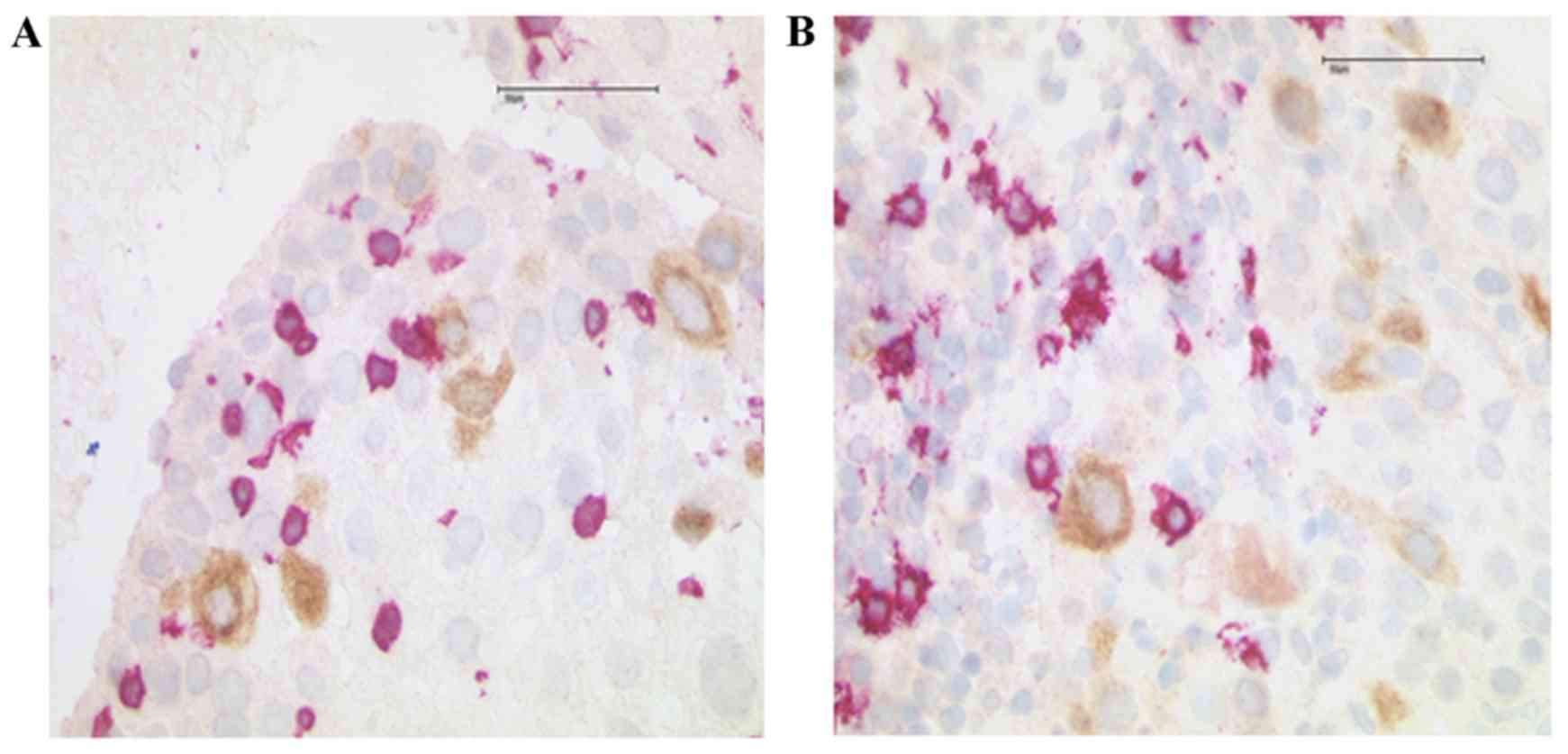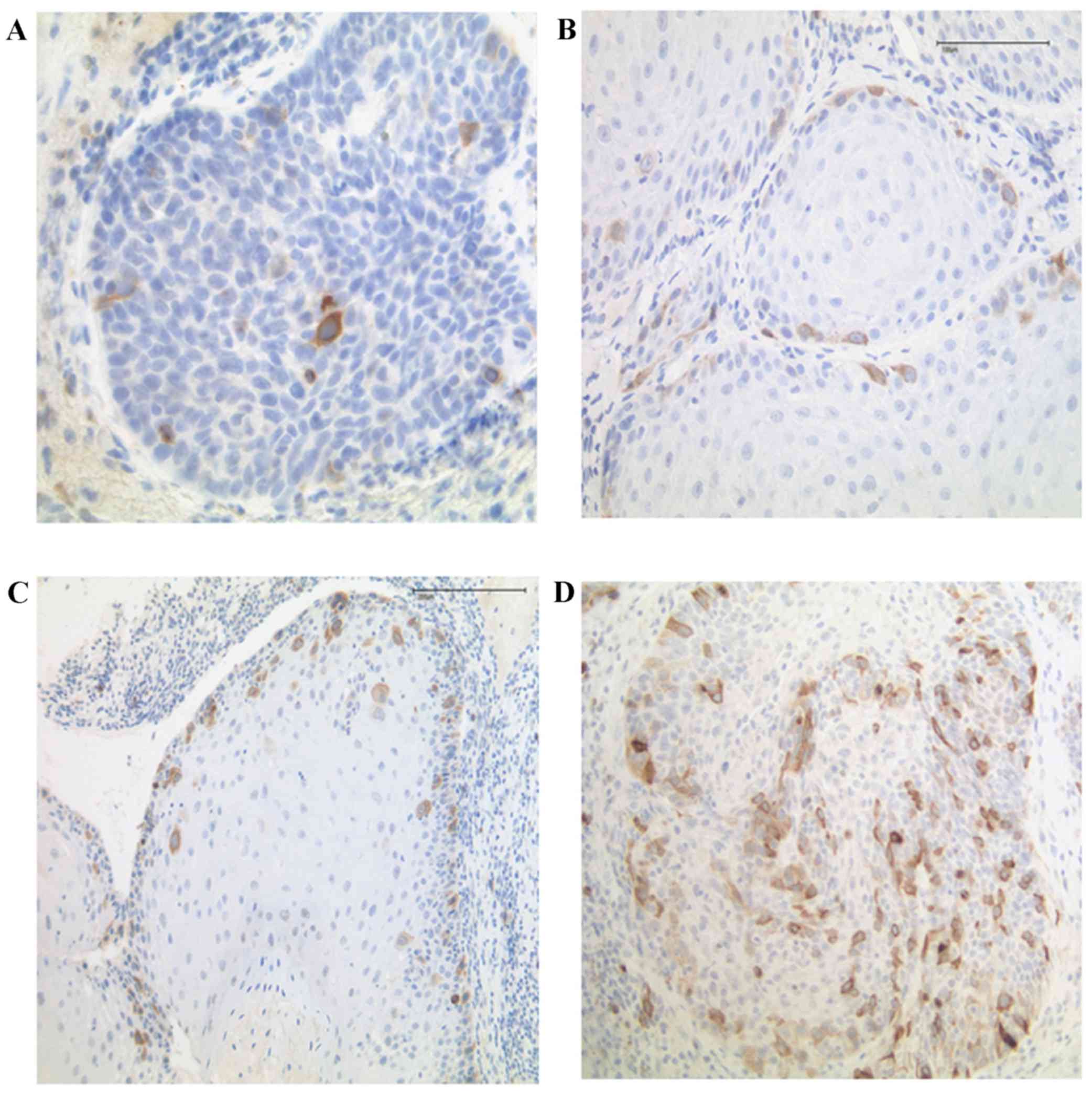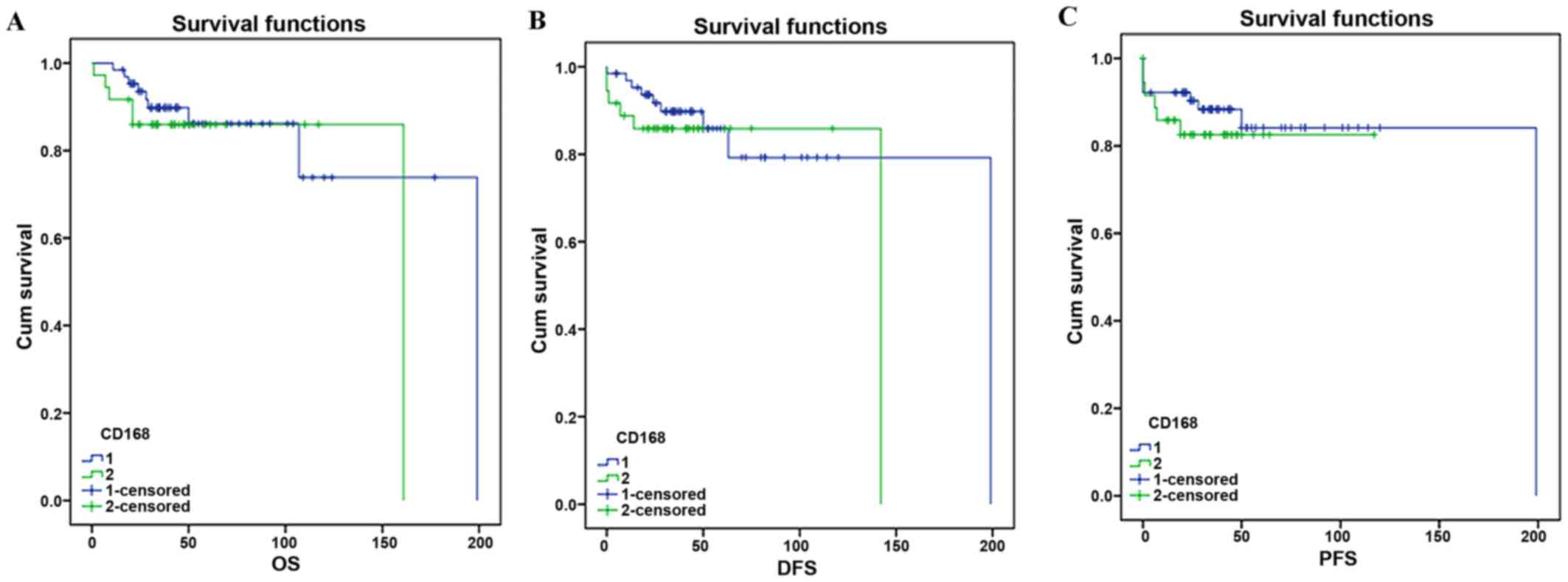|
1
|
Jemal A, Bray F, Center MM, Ferlay J, Ward
E and Forman D: Global cancer statistics. CA Cancer J Clin.
61:69–90. 2011. View Article : Google Scholar : PubMed/NCBI
|
|
2
|
Gao J, Panizza B, Johnson NW, Coman S and
Clough AR: Basic consideration of research strategies for head and
neck cancer. Front Med. 6:339–353. 2012. View Article : Google Scholar : PubMed/NCBI
|
|
3
|
Gangane N, Chawla S, Anshu, Gupta SS and
Sharma SM: Reassessment of risk factors for oral cancer. Asian Pac
J Cancer Prev. 8:243–248. 2007.PubMed/NCBI
|
|
4
|
Accortt NA, Waterbor JW, Beall C and
Howard G: Cancer incidence among a cohort of smokeless tobacco
users (United States). Cancer Causes Control. 16:1107–1115. 2005.
View Article : Google Scholar : PubMed/NCBI
|
|
5
|
Paz IB, Cook N, Odom-Maryon T, Xie Y and
Wilczynski SP: Human papillomavirus (HPV) in head and neck cancer.
An association of HPV 16 with squamous cell carcinoma of Waldeyer's
tonsillar ring. Cancer. 79:595–604. 1997. View Article : Google Scholar : PubMed/NCBI
|
|
6
|
Kreimer AR, Clifford GM, Boyle P and
Franceschi S: Human papillomavirus types in head and neck squamous
cell carcinomas worldwide: A systematic review. Cancer Epidemiol
Biomarkers Prev. 14:467–475. 2005. View Article : Google Scholar : PubMed/NCBI
|
|
7
|
Zaravinos A: An updated overview of
HPV-associated head and neck carcinomas. Oncotarget. 5:3956–3969.
2014. View Article : Google Scholar : PubMed/NCBI
|
|
8
|
Saraiya M, Unger ER, Thompson TD, Lynch
CF, Hernandez BY, Lyu CW, Steinau M, Watson M, Wilkinson EJ,
Hopenhayn C, et al: HPV Typing of Cancers Workgroup: US assessment
of HPV types in cancers: Implications for current and 9-valent HPV
vaccines. J Natl Cancer Inst. 107:djv0862015. View Article : Google Scholar : PubMed/NCBI
|
|
9
|
Grimm M, Schmitt S, Teriete P, Biegner T,
Stenzl A, Hennenlotter J, Muhs HJ, Munz A, Nadtotschi T, König K,
et al: A biomarker based detection and characterization of
carcinomas exploiting two fundamental biophysical mechanisms in
mammalian cells. BMC Cancer. 13:5692013. View Article : Google Scholar : PubMed/NCBI
|
|
10
|
Grimm M, Cetindis M, Lehmann M, Biegner T,
Munz A, Teriete P and Reinert S: Apoptosis resistance-related ABCB5
and DNaseX (Apo10) expression in oral carcinogenesis. Acta Odontol
Scand. 73:336–342. 2015. View Article : Google Scholar : PubMed/NCBI
|
|
11
|
Lynn BD, Li X, Cattini PA, Turley EA and
Nagy JI: Identification of sequence, protein isoforms, and
distribution of the hyaluronan-binding protein RHAMM in adult and
developing rat brain. J Comp Neurol. 439:315–330. 2001. View Article : Google Scholar : PubMed/NCBI
|
|
12
|
Choudhary M, Zhang X, Stojkovic P, Hyslop
L, Anyfantis G, Herbert M, Murdoch AP, Stojkovic M and Lako M:
Putative role of hyaluronan and its related genes, HAS2 and RHAMM,
in human early preimplantation embryogenesis and embryonic stem
cell characterization. Stem Cells. 25:3045–3057. 2007. View Article : Google Scholar : PubMed/NCBI
|
|
13
|
Karamitopoulou E, Zlobec I, Panayiotides
I, Patsouris ES, Peros G, Rallis G, Lapas C, Karakitsos P,
Terracciano LM and Lugli A: Systematic analysis of proteins from
different signaling pathways in the tumor center and the invasive
front of colorectal cancer. Hum Pathol. 42:1888–1896. 2011.
View Article : Google Scholar : PubMed/NCBI
|
|
14
|
Knüpfer MM, Poppenborg H, Hotfilder M,
Kühnel K, Wolff JE and Domula M: CD44 expression and hyaluronic
acid binding of malignant glioma cells. Clin Exp Metastasis.
17:71–76. 1999. View Article : Google Scholar : PubMed/NCBI
|
|
15
|
Assmann V, Gillett CE, Poulsom R, Ryder K,
Hart IR and Hanby AM: The pattern of expression of the
microtubule-binding protein RHAMM/IHABP in mammary carcinoma
suggests a role in the invasive behaviour of tumour cells. J
Pathol. 195:191–196. 2001. View
Article : Google Scholar : PubMed/NCBI
|
|
16
|
Kong QY, Liu J, Chen XY, Wang XW, Sun Y
and Li H: Differential expression patterns of hyaluronan receptors
CD44 and RHAMM in transitional cell carcinomas of urinary bladder.
Oncol Rep. 10:51–55. 2003.PubMed/NCBI
|
|
17
|
Schmitt A, Barth TF, Beyer E, Borchert F,
Rojewski M, Chen J, Guillaume P, Gronau S, Greiner J, Möller P, et
al: The tumor antigens RHAMM and G250/CAIX are expressed in head
and neck squamous cell carcinomas and elicit specific CD8+ T cell
responses. Int J Oncol. 34:629–639. 2009. View Article : Google Scholar : PubMed/NCBI
|
|
18
|
Shigeishi H, Fujimoto S, Hiraoka M, Ono S,
Taki M, Ohta K, Higashikawa K and Kamata N: Overexpression of the
receptor for hyaluronan-mediated motility, correlates with
expression of microtubule-associated protein in human oral squamous
cell carcinomas. Int J Oncol. 34:1565–1571. 2009. View Article : Google Scholar : PubMed/NCBI
|
|
19
|
Shigeishi H, Biddle A, Gammon L, Emich H,
Rodini CO, Gemenetzidis E, Fazil B, Sugiyama M, Kamata N and
Mackenzie IC: Maintenance of stem cell self-renewal in head and
neck cancers requires actions of GSK3β influenced by CD44 and
RHAMM. Stem Cells. 31:2073–2083. 2013. View Article : Google Scholar : PubMed/NCBI
|
|
20
|
Turley EA, Noble PW and Bourguignon LY:
Signaling properties of hyaluronan receptors. J Biol Chem.
277:4589–4592. 2002. View Article : Google Scholar : PubMed/NCBI
|
|
21
|
Wang C, Entwistle J, Hou G, Li Q and
Turley EA: The characterization of a human RHAMM cDNA: Conservation
of the hyaluronan-binding domains. Gene. 174:299–306. 1996.
View Article : Google Scholar : PubMed/NCBI
|
|
22
|
Telmer PG, Tolg C, McCarthy JB and Turley
EA: How does a protein with dual mitotic spindle and extracellular
matrix receptor functions affect tumor susceptibility and
progression? Commun Integr Biol. 4:182–185. 2011. View Article : Google Scholar : PubMed/NCBI
|
|
23
|
Schlesinger-Raab AHU, Schubert-Fritschle G
and Engel J: Epidemiologie der Kopf-Hals-TumorenKopf-Hals-Malignome
Mast G. München: 2014
|
|
24
|
Woolgar JA and Triantafyllou A: Pitfalls
and procedures in the histopathological diagnosis of oral and
oropharyngeal squamous cell carcinoma and a review of the role of
pathology in prognosis. Oral Oncol. 45:361–385. 2009. View Article : Google Scholar : PubMed/NCBI
|
|
25
|
Turley EA, Hossain MZ, Sorokan T, Jordan
LM and Nagy JI: Astrocyte and microglial motility in vitro is
functionally dependent on the hyaluronan receptor RHAMM. Glia.
12:68–80. 1994. View Article : Google Scholar : PubMed/NCBI
|
|
26
|
Turley EA, Austen L, Moore D and Hoare K:
Ras-transformed cells express both CD44 and RHAMM hyaluronan
receptors: Only RHAMM is essential for hyaluronan-promoted
locomotion. Exp Cell Res. 207:277–282. 1993. View Article : Google Scholar : PubMed/NCBI
|
|
27
|
Laurent TC: Biochemistry of hyaluronan.
Acta Otolaryngol Suppl. 442:7–24. 1987. View Article : Google Scholar : PubMed/NCBI
|
|
28
|
Niedworok C, Kretschmer I, Röck K, Vom
Dorp F, Szarvas T, Hess J, Freudenberger T, Melchior-Becker A,
Rübben H and Fischer JW: The impact of the receptor of
hyaluronan-mediated motility (RHAMM) on human urothelial
transitional cell cancer of the bladder. PLoS One. 8:e756812013.
View Article : Google Scholar : PubMed/NCBI
|
|
29
|
Yamano Y, Uzawa K, Shinozuka K, Fushimi K,
Ishigami T, Nomura H, Ogawara K, Shiiba M, Yokoe H and Tanzawa H:
Hyaluronan-mediated motility: A target in oral squamous cell
carcinoma. Int J Oncol. 32:1001–1009. 2008.PubMed/NCBI
|
|
30
|
Akiyama Y, Jung S, Salhia B, Lee S,
Hubbard S, Taylor M, Mainprize T, Akaishi K, van Furth W and Rutka
JT: Hyaluronate receptors mediating glioma cell migration and
proliferation. J Neurooncol. 53:115–127. 2001. View Article : Google Scholar : PubMed/NCBI
|
|
31
|
Mendoza ES Rosa, Moreno E and Caguioa PB:
Predictors of early distant metastasis in women with breast cancer.
J Cancer Res Clin Oncol. 139:645–652. 2013. View Article : Google Scholar : PubMed/NCBI
|
|
32
|
Page AJ, Li A, Hestley A, Murray D,
Carlson GW and Delman KA: Increasing Age Is Associated with Worse
Prognostic Factors and Increased Distant Recurrences despite Fewer
Sentinel Lymph Node Positives in Melanoma. Int J Surg Oncol.
2012:4569872012.PubMed/NCBI
|












